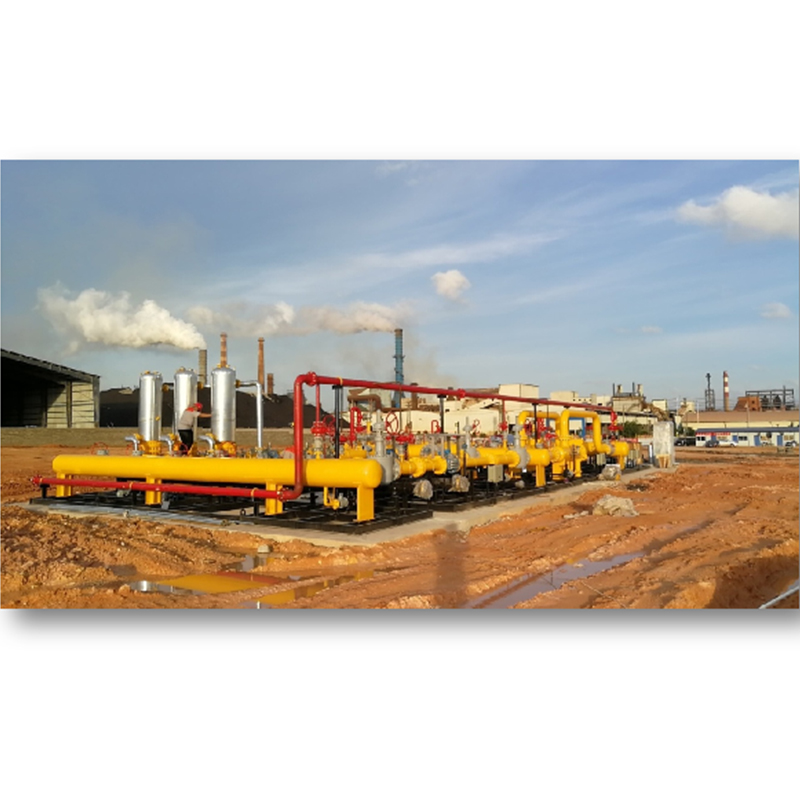
Jul . 26, 2024 05:23
Back to list
Design and Operation of Natural Gas Pressure Regulation Stations for Safe Distribution Systems
Natural Gas Pressure Reducing Stations Essential Components of Gas Distribution Networks
Natural gas is one of the most widely used energy sources globally, serving residential, commercial, and industrial needs. One critical aspect of the natural gas distribution system is the pressure reducing station (PRS). These facilities play an essential role in ensuring that gas is delivered safely and efficiently from high-pressure transmission pipelines to the lower pressure required for end-users.
Understanding Pressure Reducing Stations
A natural gas pressure reducing station is designed to lower the pressure of gas being transported through pipelines so it can be safely used in homes and businesses. In the upstream part of the gas supply chain, natural gas is moved through high-pressure pipelines, often under pressures exceeding 1,000 psi. However, for consumers, the gas must be provided at much lower pressures, typically between 4 to 60 psi, depending on local regulations and equipment specifications.
The function of a PRS is to decrease this high pressure to suitable levels while maintaining the required flow rate, temperature, and quality of the gas. PRS installations can vary in complexity, from simple setups used in rural areas to sophisticated systems employed in urban centers.
Components of a Pressure Reducing Station
A typical pressure reducing station consists of several components, including
1. Inlet and Outlet Valves These control the flow of gas into and out of the station. They help isolate the system for maintenance or emergencies.
2. Pressure Regulators The heart of the PRS, these devices reduce the gas pressure to the desired level. They operate automatically and can adjust to varying flow demands.
natural gas pressure reducing station

3. Filters These remove various impurities from the gas, such as dust and moisture, ensuring that only high-quality gas enters the distribution system.
4. Automatic Control Systems Modern PRS installations often incorporate electronic controls to monitor pressure levels and flow rates. These systems can remotely alert operators of any irregularities or failures.
5. Safety Devices These may include pressure relief valves which help prevent over-pressurization and potential hazards. Such safety measures are crucial for protecting both consumers and infrastructure.
Importance of Pressure Reducing Stations
PRS stations are vital for several reasons. First, they enhance safety by ensuring that gas is delivered at safe pressure levels for use in homes and businesses. High-pressure gas poses serious risks, including explosions and infrastructure damage, making proper regulation crucial for public safety.
Secondly, PRS stations contribute to the efficiency of the natural gas distribution system. By maintaining consistent pressure, they ensure that energy suppliers can meet consumer demands flexibly and reliably, avoiding shortages or excess pressure situations that could lead to system failures.
Finally, the environmental impact of natural gas distribution is minimized through proper pressure regulation. By ensuring efficient transportation and minimizing losses due to leaks or bursts, PRS stations help promote the broader adoption of natural gas as a cleaner fossil fuel alternative.
Conclusion
As the world continues to search for sustainable energy solutions, the role of natural gas in the energy mix remains significant. Pressure reducing stations are critical components in this equation, facilitating the safe and efficient distribution of natural gas from high-pressure transmission lines to end-users. By understanding their operation and importance, we can appreciate these unsung heroes of the energy infrastructure, ensuring that natural gas remains a reliable energy source for the future.
Latest news
-
Safety Valve Spring-Loaded Design Overpressure ProtectionNewsJul.25,2025
-
Precision Voltage Regulator AC5 Accuracy Grade PerformanceNewsJul.25,2025
-
Natural Gas Pressure Regulating Skid Industrial Pipeline ApplicationsNewsJul.25,2025
-
Natural Gas Filter Stainless Steel Mesh Element DesignNewsJul.25,2025
-
Gas Pressure Regulator Valve Direct-Acting Spring-Loaded DesignNewsJul.25,2025
-
Decompression Equipment Multi-Stage Heat Exchange System DesignNewsJul.25,2025

